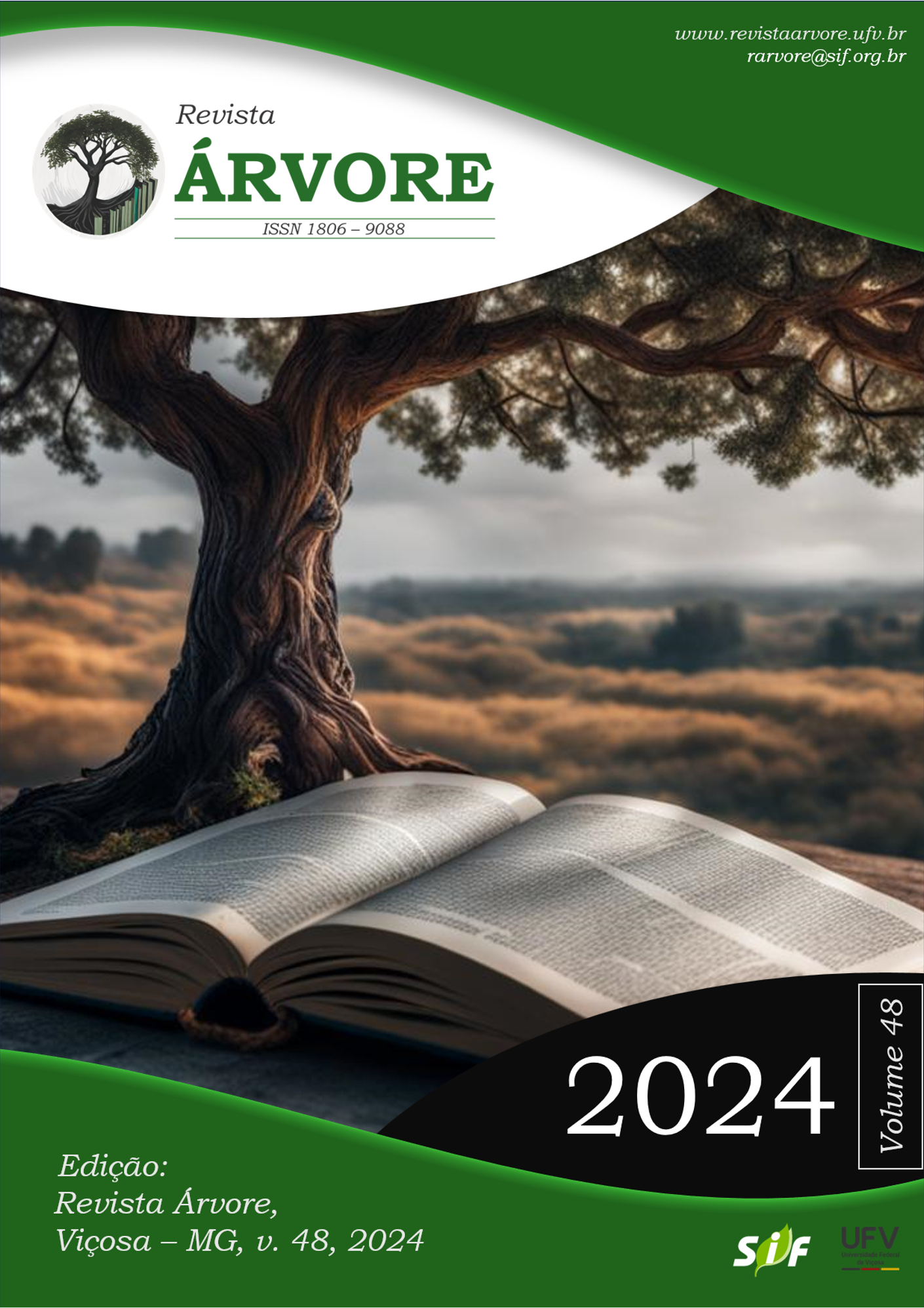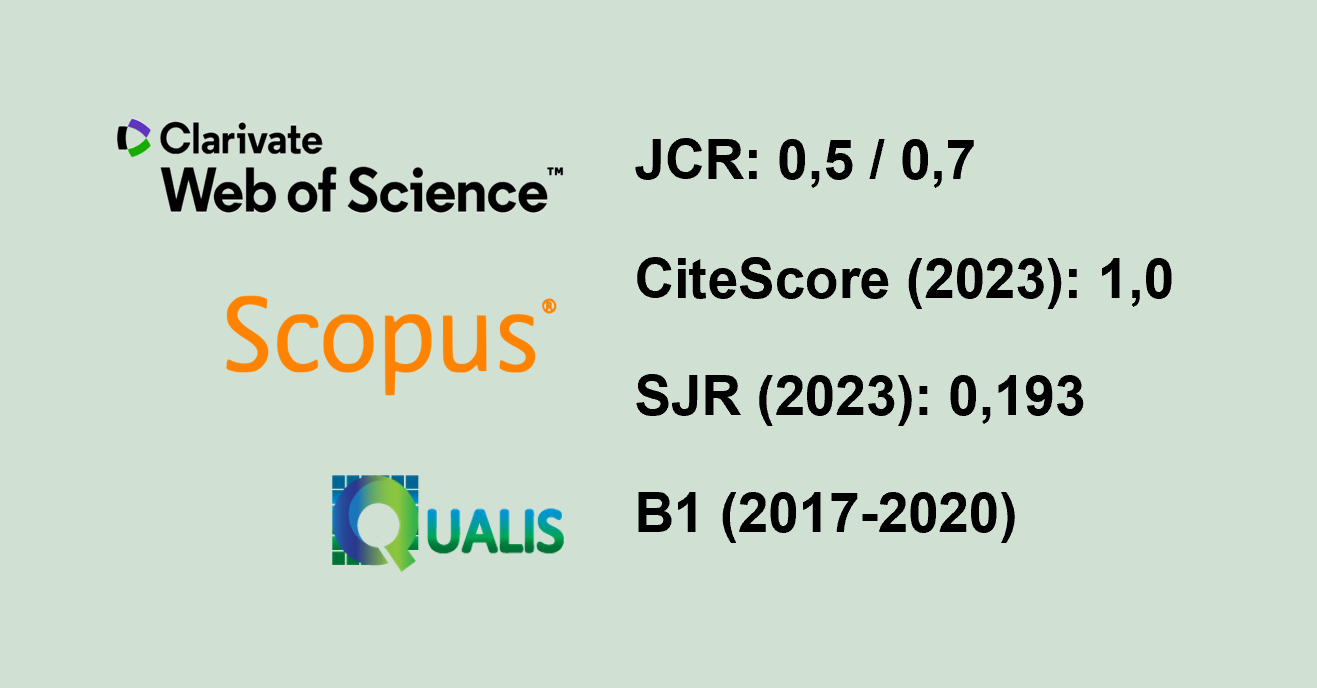Methods for kino evaluation and estimates of genetic parameters in Corymbia
DOI:
https://doi.org/10.53661/1806-9088202448263712.Keywords:
Forest improvement, wood quality, genotypic correlation, gummosisAbstract
Species within the genus Corymbia are regarded as potential alternatives to Eucalyptus. In addition to having superior wood quality, Corymbia spp. are tolerant to most pests, diseases, and abiotic stresses that affecting Eucalyptus plantations, including physiological disorders, water deficit, and wind damage. However, environmental stresses stimulate kino production, which decreases the quality of pulp and sawn wood. This study aimed to develop a method for evaluating kinoand estimate genetic parameters in Corymbia. For this, 16 Corymbia (C. citriodora × C. torelliana) hybrid clones and 5 clones of Eucalyptus were used. Two evaluation methods (M1 and M2) were tested for kino evaluation; M1 consisted of drilling the bark with Pilodyn and M2 consisted of drilling the heartwood with Pilodyn. The following kino parameters were evaluated: exudation incidence, exudate length which flowed over the stem, and exudate weight. Genetic parameters were estimated by a mixed model method (REML/BLUP). The significance of random effects of the statistical model was tested by the likelihood ratio test. Significant clone effects were obtained for all kino parameters, except for exudate length as assessed by M2. Kino parameters determined by M1 exhibited higher heritability and accuracy. Therefore, M1 should be preferred for kino evaluation in Corymbia.
Keywords: Forest improvement; wood quality; genotypic correlation; gummosis.
Downloads
Published
How to Cite
Issue
Section
License
All authors agreed to submit the work to Revista Árvore and granted the exclusive license to publish the article. The authors affirm that it is an original work and has not been previously published elsewhere. The scientific content and opinions expressed in the article are the sole responsibility of the authors and reflect their opinions, not necessarily representing the opinions of the editorial board of Revista Árvore or of the Society of Forest Investigations (SIF).








